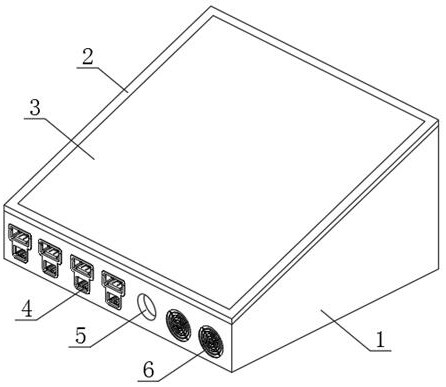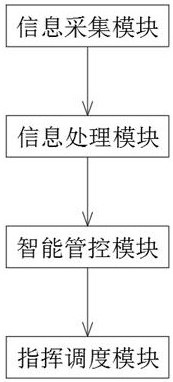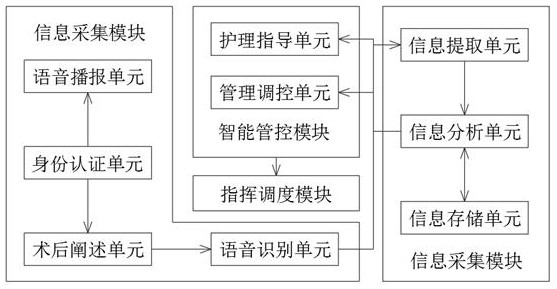Operating room postoperative nursing information analysis, management and scheduling integrated intelligent platform
An intelligent platform and information analysis technology, applied in the field of postoperative care, can solve the problems of increasing the nursing burden of medical staff, lack of analysis management scheduling, inconvenient postoperative care, etc., to achieve convenient care, reduce patients' worries, and reduce the burden of care Effect
- Summary
- Abstract
- Description
- Claims
- Application Information
AI Technical Summary
Problems solved by technology
Method used
Image
Examples
Embodiment 1
[0066] see Figure 1-Figure 2 , an integrated intelligent platform for post-operative nursing information analysis, management and scheduling in the operating room, including a housing 1 and a face cover 2. The surface of the housing 1 is provided with a face cover 2, and a human-machine interactive display screen 3 is embedded on the face cover 2. The interactive display screen 3 can realize the intelligent interaction between the post-operative patient and the integrated intelligent platform, making post-operative care more convenient.
[0067] The side end face of the housing 1 is provided with a data transmission interface 4 , a charging interface 5 and a heat dissipation port 6 .
[0068] The data transmission interface 4 can realize convenient data transmission, the charging interface 5 can provide power for the integrated intelligent platform to ensure the normal operation of the integrated intelligent platform, and the integrated intelligent platform can be dissipated ...
Embodiment 2
[0074] see Figure 5 , the steps for the information collection module to collect the postoperative information of the postoperative patient are:
[0075] S101: Post-operative patient login integrated intelligent platform, where post-operative patient login methods include, but are not limited to, patient ID card login, patient information scan code login or patient registration number login, and post-operative patients use any of these login methods to log in , authenticate the identity of the postoperative patient through the identity authentication unit, and execute different response strategies according to the result of the patient identity authentication;
[0076] It should be noted that the way to log in the patient's ID card is: after the operation, the patient manually enters the patient's ID card number after the operation on the integrated intelligent platform, and the patient's identity is authenticated through the ID card number;
[0077] The way to log in by sca...
Embodiment 3
[0097] The received postoperative information is analyzed by the information analysis unit, including:
[0098] acquiring the postoperative information, performing semantic analysis on the postoperative information, and splitting the postoperative information into several strings;
[0099] Convert each character in each string into a word vector, and generate a sequence of word vectors corresponding to the string;
[0100] Analyzing the current vector modulo length of each word vector sequence, and extracting the first target word vector sequence whose current vector modulo length is consistent with the preset first vector modulo length;
[0101] At the same time, extract the second target word vector sequence whose current vector modulo length is consistent with the preset second vector modulo length;
[0102] Parse the first target word vector sequence in the first target word vector sequence to obtain the patient's name information, parse the second target word vector sequ...
PUM
 Login to View More
Login to View More Abstract
Description
Claims
Application Information
 Login to View More
Login to View More - R&D
- Intellectual Property
- Life Sciences
- Materials
- Tech Scout
- Unparalleled Data Quality
- Higher Quality Content
- 60% Fewer Hallucinations
Browse by: Latest US Patents, China's latest patents, Technical Efficacy Thesaurus, Application Domain, Technology Topic, Popular Technical Reports.
© 2025 PatSnap. All rights reserved.Legal|Privacy policy|Modern Slavery Act Transparency Statement|Sitemap|About US| Contact US: help@patsnap.com



